
# 1016 - 1952 3¢ International Red Cross
3¢ Red Cross
City: New York, NY
Quantity: 136,220,000
Printed by: Bureau of Engraving and Printing
Printing Method: Rotary Press
Perforations: 11 x 10½
Color: Deep blue and carmine
The First Geneva Convention
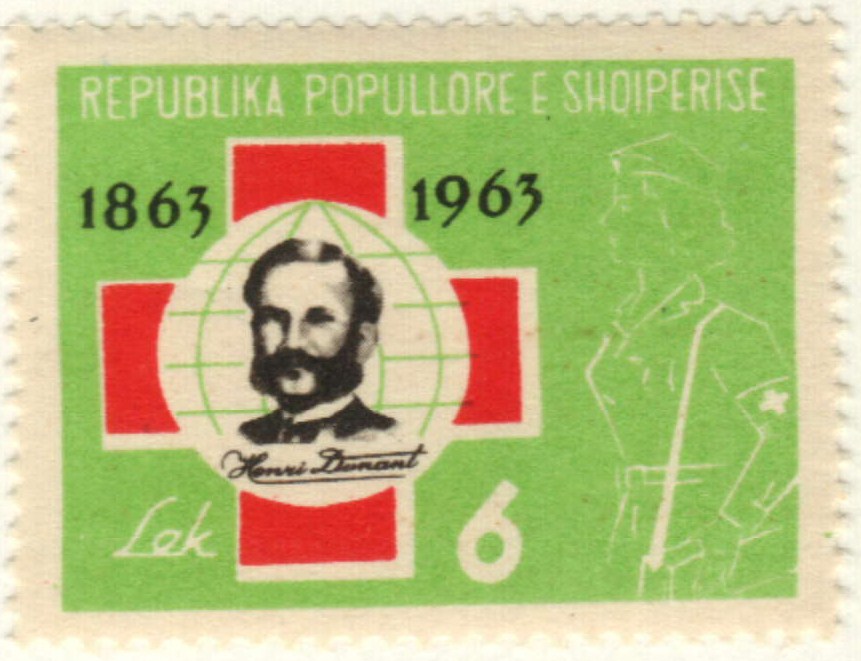
On August 22, 1864, twelve nations signed the first Geneva Convention for the Amelioration of the Condition of the Wounded in Armies in the Field.
While on a business trip to Italy in 1859, Swiss humanitarian Jean Henri Dunant witnessed the aftermath of the Battle of Solferino (part of the Austro-Sardinian War) in which nearly 40,000 soldiers were killed or wounded. Shocked by the lack of medical care, Dunant put his business aside and began tending to the wounded. He convinced locals to help without discrimination.
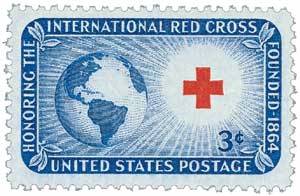
When he returned to his home in Geneva, Dunant wrote an account of what he witnessed, titled, A Memory of Solferino. In the book, he asked, “Would it not be possible, in time of peace and quiet, to form relief societies for the purpose of having care given to the wounded in wartime by zealous, devoted and thoroughly qualified volunteers?”
In February 1863, Dunant and four other Geneva leaders founded the Committee of Five to see if his idea was possible. They renamed their organization the International Committee for Relief to the Wounded and began preparing for a meeting with other nations. That October, delegates from around the world met in Geneva and founded the International Committee of the Red Cross.
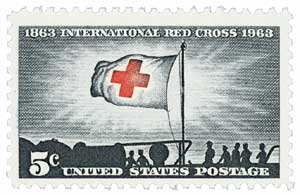
Early on, the members of the Red Cross realized that while each nation was responsible for the health and well being of its own people, there should also be official agencies ensuring the proper treatment of all people, especially during times of war. To this end, they agreed on the need for a set of rules for all to follow during such conflicts.

So on August 22, 1864, representatives from 12 nations met in Geneva to sign the new convention, which served as “the basis on which rest the rules of international law for the protection of the victims of armed conflicts.” The signatories included four now former German states, Belgium, Denmark, France, Italy, the Netherlands, Portugal, Spain, and Switzerland. The document included 10 articles. Some of the major points included that care centers for the sick and wounded couldn’t be captured or destroyed; that civilians aiding the wounded shouldn’t be hurt; and the recognition of the Red Cross symbol.
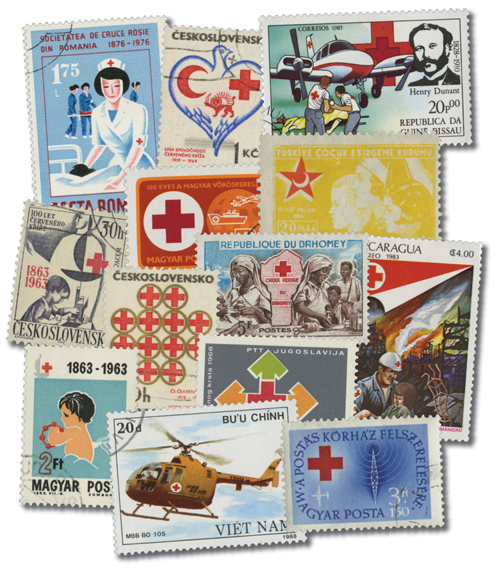
Sweden-Norway (the two nations were united at the time) signed the convention that December and other nations later followed. In fact, American Red Cross founder Clara Barton was a driving force behind the United States ratifying the convention in 1882.
However, as warfare and military technology evolved in the coming decades, the Geneva Convention became outdated. A series of new conventions were held:
- The Hague Conventions of 1899 and 1907 were based on the Liber Code, a general order signed by President Abraham Lincoln during the Civil War calling for ethical treatment during war.
- The Geneva Convention for the Amelioration of the Condition of the Wounded and Sick in Armies at Sea was held in July 1906.
- The Geneva Convention relative to the Treatment of Prisoners of War was held in July 1929.
- The discovery of war crimes during World War II led to the Geneva Convention relative to the Protection of Civilian Persons in Time of War in 1949.
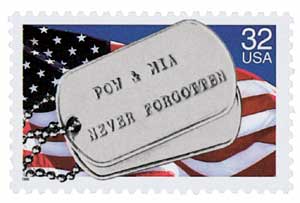
Within a few years, these conventions were already considered to be incomplete, as many wars were internal or involved insurgents that might not follow the convention anyway. New protocols were added to the conventions in 1977 and 2005.
Click here to read the original Geneva Convention and here for a summary of 1949 Geneva Convention and its later protocols.
3¢ Red Cross
City: New York, NY
Quantity: 136,220,000
Printed by: Bureau of Engraving and Printing
Printing Method: Rotary Press
Perforations: 11 x 10½
Color: Deep blue and carmine
The First Geneva Convention

On August 22, 1864, twelve nations signed the first Geneva Convention for the Amelioration of the Condition of the Wounded in Armies in the Field.
While on a business trip to Italy in 1859, Swiss humanitarian Jean Henri Dunant witnessed the aftermath of the Battle of Solferino (part of the Austro-Sardinian War) in which nearly 40,000 soldiers were killed or wounded. Shocked by the lack of medical care, Dunant put his business aside and began tending to the wounded. He convinced locals to help without discrimination.

When he returned to his home in Geneva, Dunant wrote an account of what he witnessed, titled, A Memory of Solferino. In the book, he asked, “Would it not be possible, in time of peace and quiet, to form relief societies for the purpose of having care given to the wounded in wartime by zealous, devoted and thoroughly qualified volunteers?”
In February 1863, Dunant and four other Geneva leaders founded the Committee of Five to see if his idea was possible. They renamed their organization the International Committee for Relief to the Wounded and began preparing for a meeting with other nations. That October, delegates from around the world met in Geneva and founded the International Committee of the Red Cross.

Early on, the members of the Red Cross realized that while each nation was responsible for the health and well being of its own people, there should also be official agencies ensuring the proper treatment of all people, especially during times of war. To this end, they agreed on the need for a set of rules for all to follow during such conflicts.

So on August 22, 1864, representatives from 12 nations met in Geneva to sign the new convention, which served as “the basis on which rest the rules of international law for the protection of the victims of armed conflicts.” The signatories included four now former German states, Belgium, Denmark, France, Italy, the Netherlands, Portugal, Spain, and Switzerland. The document included 10 articles. Some of the major points included that care centers for the sick and wounded couldn’t be captured or destroyed; that civilians aiding the wounded shouldn’t be hurt; and the recognition of the Red Cross symbol.

Sweden-Norway (the two nations were united at the time) signed the convention that December and other nations later followed. In fact, American Red Cross founder Clara Barton was a driving force behind the United States ratifying the convention in 1882.
However, as warfare and military technology evolved in the coming decades, the Geneva Convention became outdated. A series of new conventions were held:
- The Hague Conventions of 1899 and 1907 were based on the Liber Code, a general order signed by President Abraham Lincoln during the Civil War calling for ethical treatment during war.
- The Geneva Convention for the Amelioration of the Condition of the Wounded and Sick in Armies at Sea was held in July 1906.
- The Geneva Convention relative to the Treatment of Prisoners of War was held in July 1929.
- The discovery of war crimes during World War II led to the Geneva Convention relative to the Protection of Civilian Persons in Time of War in 1949.

Within a few years, these conventions were already considered to be incomplete, as many wars were internal or involved insurgents that might not follow the convention anyway. New protocols were added to the conventions in 1977 and 2005.
Click here to read the original Geneva Convention and here for a summary of 1949 Geneva Convention and its later protocols.








